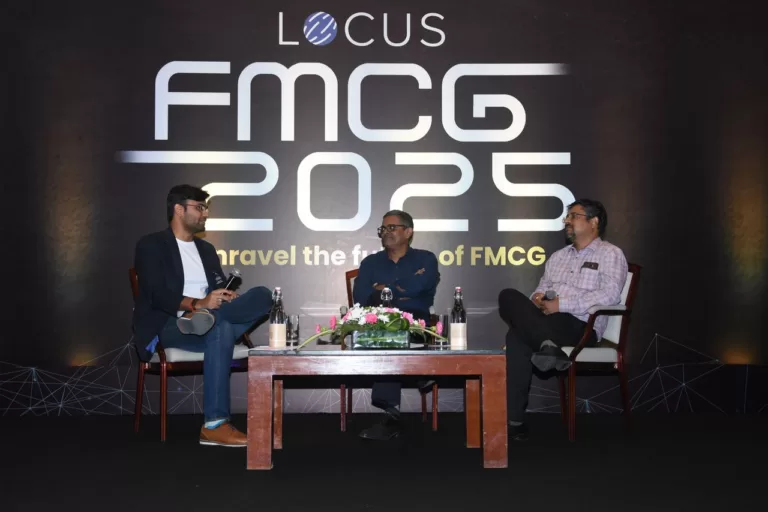Route Optimization
E-commerce disrupting the CPG landscape
Aug 27, 2019
5 mins read
Want to know how CPG eCommerce distributors can thrive in the changing scenario?

- CPG Supply Chain Challenges
- CPG Supply Chain Opportunities
- Locus Solutions for CPG Distributor Landscape
Distributors have been an indispensable part of the CPG supply chain. CPG players have relied on their traditional partners to handle the sales, shipping, and servicing of the products to retailers in a specific geographic area or a particular class of business.
Conventionally, The distributor typically purchases the products from vendors and resells them to retailers. The distributor takes a margin to facilitate its operations, and thus, the model keeps working.

However, the circumstances are quickly changing. With major CPG e-commerce players like Amazon all set to enter the distributor space, and Uber freight already operating, the traditional distribution model faces the prospect of becoming obsolete. Let’s have a look at the challenges, opportunities, and potential solutions for the CPG distributors in the present scenario:
CPG eCommerce Supply Chain Challenges
Rapidly Growing SKU’s: A big issue for the distributors is the rapidly growing SKUs for different brands. With niche segments like organic products, personalized goods, and vegan foods coming up, each brand has a significant more amount of offerings. With more variety of products, the transporting challenges (shipping them together or separately, cold chain requirements, etc.) are also getting complex. Even specialized stores like fresh produce or organic only, have their own sets of requirements.
Lower Return on Capital Invested: When retailers order inventories, it sits on their books (and the capital is blocked), resulting in a lower return on the capital invested. Hence the retailers demand to only stock items that can be replenished with a higher frequency. This has led to the popularity of a lean inventory model amongst retailers, which means that the stores need to be replenished faster (often twice as fast as previously done). This not only means more trips per outlet for distributors but also smaller size of orders per delivery. Lack of FTL or Full Truckload thus becomes another factor in the increasing expenses of the distributors.
Pricing: Intense price stress at the retail level also puts downward pressure on distributors, which leads to smaller margins. In addition, distributors are now not only competing with mail orders and catalog sales but also with services such as online stores, auctions, and internet-based direct marketing.
eCommerce: Not only this, the rise of CPG e-commerce has resulted in a massive surge in customer expectations when it comes to last mile deliveries. With Amazon and other e-commerce platforms making same-day delivery a norm, CPG companies are also trying to reach their customer base directly. Even though it may seem like the end for traditional distributors, there are opportunities hidden when looked closely.
CPG Supply Chain Opportunities
With CPG brands going direct to consumers (D2C), distributors have a chance to become fulfillment partners of CPG brands. Many CPG brands are launching D2C online models, where once the order is placed, the brands use their distributor’s warehouse and fleet to deliver the product to the end customer.
However, in order to position themselves as the fulfillment partners, traditional distributors need to adopt advanced tech solutions that can help them with last-mile fulfillment, optimal fleet mix, and tracking of resources amongst other functions.
Locus CPG Supply Chain Solutions
AI-backed logistics solutions like Locus ensure that distributors stay ahead of the curve when it comes to fulfillment operations.

These solutions can help distributors with:
- Planning optimal fleets for current business needs and potential growth in the future.
- Identifying the number & size of vehicles that provide the lowest cost per mile while ensuring Full Truckload (FTL) capacity.
- Leverage the best combination of captive fleets & market vehicles to reduce logistics costs.
- Analyzing historical truck routes, determining the size, and the number of trucks required (often leading to fleet reduction), mapping them to specific customers and ensuring that the truck routes don’t overlap – resulting in reduced SLAs and fuel costs.
- DIFOT (Delivery In Full On Time): Most of the customer deliveries would follow a particular time-frequency; however, inventory requirements would change without any set pattern. Features like dynamic route optimization & automated sorting engine, factors in all route & inventory details to ensure your trucks are delivering in full on time.
- Analyzing the fleet’s performance: The modern solutions allow distributors to analyze the ROI from each of their trucks, measuring the performance & profitability of the entire fleet and reduce further costs with actionable insights.
- Improving customer experience: With real-time tracking, customers get SMS notifications on how far their delivery trucks are, and what’s the ETA for deliveries – with tracking links that open real-time maps.
- Better contract renegotiation with an estimate of vehicle requirements.
- Ensuring high levels of SLA compliance, even during peak periods.
The CPG distributor landscape is quickly changing in North America. To stay ahead of the trends, distributors would need to identify new gaps and adopt new technology or risk falling behind.

Related Tags:

Last Mile Delivery Optimization
How Hollywood can teach us supply chain lessons: The red carpet of logistics
The power of film is well masked behind the facade of Hollywood scandals and celebrity faff. If you take a closer look, some movies can leave a lasting impression on principles to adopt in real life. With increasingly complex consumer demand patterns and globalization of operations, your supply chain could use a helping hand. The […]
Read more
E-Commerce
What’s in store for FMCG in 2025? We just found out from experts
Future of FMCG Supply Chain: The global consumer goods industry is currently going through a phase of massive transformation. Companies now need to break traditions and implement solid new-age strategies in producing, selling and distributing goods. To discuss the changing dynamics of the FMCG industry and the trends that are shaping the future of consumer […]
Read moreMOST POPULAR
EDITOR’S PICKS
SUBSCRIBE TO OUR NEWSLETTER
Stay up to date with the latest marketing, sales, and service tips and news


E-commerce disrupting the CPG landscape